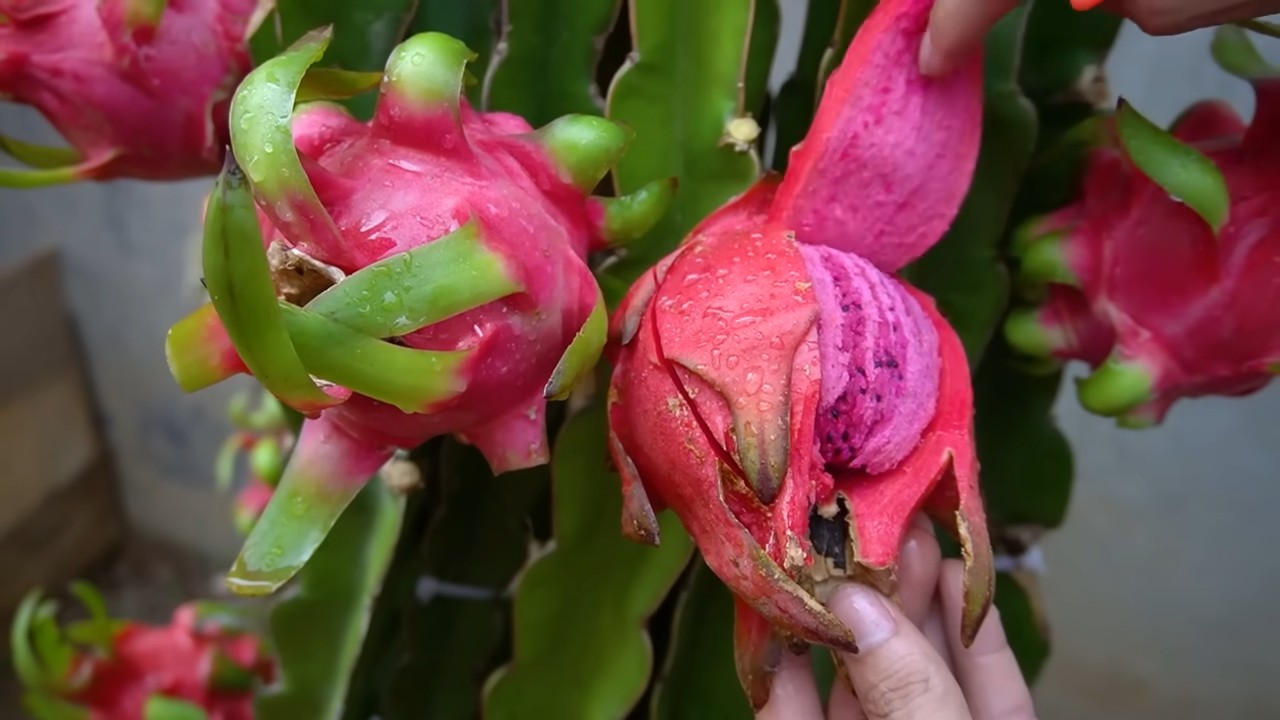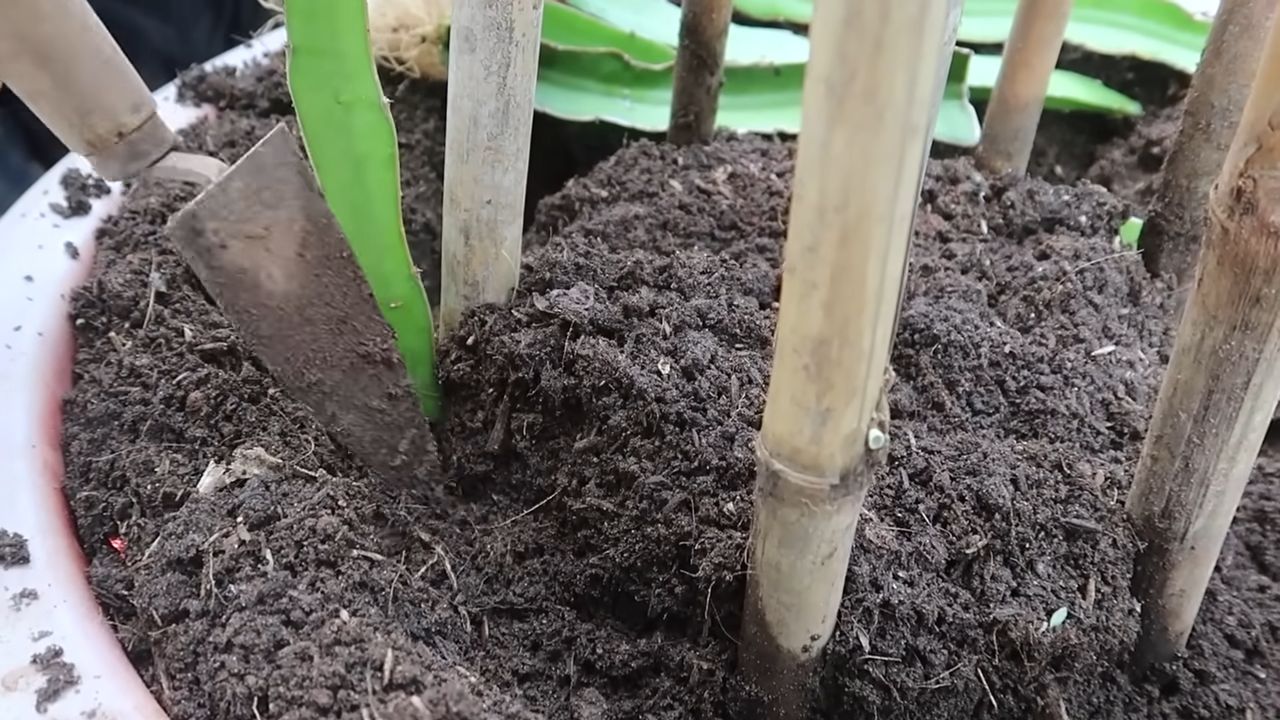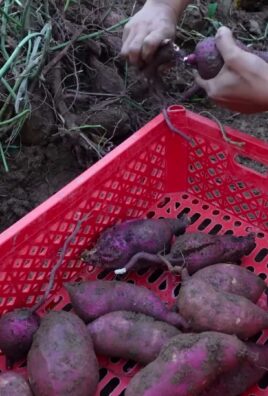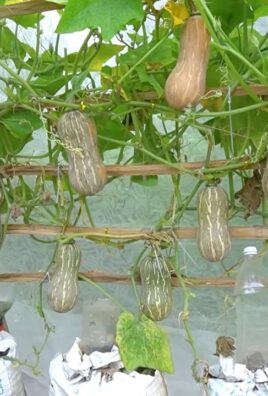Dragon Fruit Backyard Setup: Dreaming of harvesting your own exotic dragon fruit right in your backyard? You’re not alone! For centuries, cultivating unique and delicious fruits has been a source of pride and sustenance across various cultures. From the ancient Aztecs nurturing cacao beans to Southeast Asian farmers perfecting the art of dragon fruit cultivation, growing your own food connects us to a rich history.
But let’s be honest, the thought of setting up a thriving dragon fruit garden can feel a little daunting. Where do you even begin? That’s where this DIY guide comes in! I’m going to walk you through everything you need to know to create the perfect dragon fruit backyard setup, even if you’re a complete beginner.
Why is this so important? Because store-bought dragon fruit can be expensive and sometimes lack the vibrant flavor of a freshly picked one. Plus, there’s nothing quite like the satisfaction of nurturing a plant from a small cutting to a fruit-bearing beauty. Imagine impressing your friends and family with your homegrown dragon fruit – they’ll be amazed! So, let’s ditch the intimidation and dive into creating your very own dragon fruit paradise. Get ready to transform your backyard into a tropical oasis!

Growing Dragon Fruit in Your Backyard: A DIY Guide
Okay, so you want to grow dragon fruit in your backyard? Awesome! It’s a rewarding experience, and nothing beats the taste of homegrown dragon fruit. It might seem intimidating at first, but trust me, with a little effort and the right setup, you can totally do this. I’m going to walk you through everything you need to know to create the perfect dragon fruit paradise right in your own backyard.
What You’ll Need
Before we dive into the nitty-gritty, let’s gather our supplies. This will make the whole process smoother and less stressful. Here’s a list of what you’ll need:
* Dragon Fruit Cuttings or a Young Plant: This is the most important part! Make sure you get a healthy cutting or plant from a reputable source. Look for vibrant green color and no signs of disease.
* Well-Draining Soil: Dragon fruit hates soggy feet! A mix of cactus potting mix, perlite, and compost works wonders.
* Large Pots (if growing in containers): Choose pots that are at least 24 inches in diameter. Dragon fruit roots need room to grow.
* Support Structure: Dragon fruit are climbing cacti, so they need something to climb on. A sturdy trellis, a strong post, or even a repurposed tree trunk will do the trick.
* Planting Gloves: Protect your hands from thorns and soil.
* Pruning Shears: For trimming and shaping your dragon fruit plant.
* Watering Can or Hose: For watering your plants.
* Fertilizer: A balanced fertilizer specifically formulated for cacti or succulents.
* Mulch: To help retain moisture and suppress weeds.
* Zip Ties or Soft Plant Ties: To gently secure the dragon fruit stems to the support structure.
* Measuring Tape: To ensure proper spacing.
Choosing the Right Location
Location, location, location! This is crucial for dragon fruit success. They need plenty of sunlight and protection from frost.
* Sunlight: Dragon fruit thrive in full sun, which means at least 6-8 hours of direct sunlight per day. Choose a spot in your yard that gets plenty of sunshine.
* Protection from Frost: Dragon fruit are sensitive to frost. If you live in an area with cold winters, consider growing them in containers so you can move them indoors during the colder months.
* Well-Drained Area: As I mentioned before, dragon fruit hate soggy soil. Make sure the area you choose drains well. If not, you might need to amend the soil or consider growing them in raised beds.
* Space: Dragon fruit plants can get quite large, so make sure you have enough space for them to grow. Allow at least 6-8 feet between plants.
Building Your Dragon Fruit Support Structure
This is where the DIY magic happens! The support structure is essential for your dragon fruit to thrive. Here are a few options:
* Trellis: A sturdy trellis is a great option for supporting dragon fruit. You can buy a pre-made trellis or build your own using wood or metal.
* Post: A strong wooden or metal post is another popular option. Make sure the post is tall enough to support the weight of the plant. Aim for at least 5-6 feet above ground.
* Repurposed Tree Trunk: If you have a dead tree trunk in your yard, you can repurpose it as a support structure for your dragon fruit. This is a great way to add a natural element to your garden.
Building a Simple Post Support:
1. Dig a Hole: Dig a hole that is at least 2 feet deep and wide enough to accommodate the post.
2. Position the Post: Place the post in the center of the hole.
3. Add Concrete: Pour concrete around the base of the post to secure it in place. Make sure the post is plumb (perfectly vertical) before the concrete sets.
4. Let it Cure: Allow the concrete to cure for at least 24 hours before planting your dragon fruit.
5. Add a “Crown”: Dragon fruit tend to hang down once they reach the top of the support. Adding a circular “crown” or platform at the top of the post will give them a place to spread out and encourage fruiting. You can make this from wood or metal.
Planting Your Dragon Fruit
Now for the fun part! Let’s get those dragon fruit plants in the ground (or in their pots).
1. Prepare the Soil: If you’re planting in the ground, amend the soil with compost and perlite to improve drainage. If you’re planting in containers, use a well-draining potting mix specifically formulated for cacti or succulents.
2. Dig a Hole: Dig a hole that is slightly larger than the root ball of your dragon fruit plant.
3. Plant the Dragon Fruit: Gently remove the dragon fruit plant from its container and place it in the hole. Make sure the top of the root ball is level with the surrounding soil.
4. Backfill the Hole: Fill the hole with soil and gently pat it down.
5. Water Thoroughly: Water the dragon fruit plant thoroughly after planting.
6. Secure to Support: Use zip ties or soft plant ties to gently secure the dragon fruit stems to the support structure. Don’t tie them too tightly, as this can damage the stems.
Caring for Your Dragon Fruit
Once your dragon fruit is planted, it’s important to provide it with the proper care to ensure it thrives.
* Watering: Water your dragon fruit regularly, especially during the growing season (spring and summer). Allow the soil to dry out slightly between waterings. Avoid overwatering, as this can lead to root rot.
* Fertilizing: Fertilize your dragon fruit every 2-3 months with a balanced fertilizer specifically formulated for cacti or succulents. Follow the instructions on the fertilizer label.
* Pruning: Prune your dragon fruit regularly to encourage branching and fruiting. Remove any dead or damaged stems. You can also prune the plant to maintain its shape and size.
* Pest and Disease Control: Dragon fruit are generally resistant to pests and diseases, but it’s still important to keep an eye out for any problems. Common pests include aphids and mealybugs. If you notice any pests, treat them with an appropriate insecticide.
* Pollination: Dragon fruit flowers are nocturnal and are typically pollinated by bats or moths. If you don’t have these pollinators in your area, you may need to hand-pollinate the flowers. Use a small paintbrush to transfer pollen from the stamen (male part) to the pistil (female part) of the flower.
Hand-Pollination: A Closer Look
Since dragon fruit flowers bloom at night, relying on natural pollinators can be tricky. Hand-pollination significantly increases your chances of getting fruit.
1. Identify the Flower Parts: The stamen is the pollen-producing part (usually with a yellow, powdery substance), and the pistil is the central stalk in the flower.
2. Collect Pollen: Use a small, soft paintbrush to gently collect pollen from the stamens of one flower.
3. Transfer Pollen: Carefully transfer the pollen to the pistil of another flower. It’s best to use pollen from a different dragon fruit plant (cross-pollination) for better fruit set. However, some varieties are self-pollinating.
4. Timing is Key: Pollinate the flowers as soon as they open in the evening. The flowers are only receptive to pollination for a short period.
Dealing with Common Problems
Even with the best care, you might encounter some challenges. Here’s how to tackle them:
* Yellowing Leaves: This can be a sign of overwatering, underwatering, or nutrient deficiency. Check the soil moisture and adjust your watering schedule accordingly. Fertilize the plant with a balanced fertilizer.
* Root Rot: This is caused by overwatering and poor drainage. If you suspect root rot, carefully remove the plant from its pot and inspect the roots. Remove any rotten roots and repot the plant in fresh, well-draining soil.
* Sunburn: Dragon fruit can get sunburned if they are exposed to too much direct sunlight, especially when they are young. Provide some shade during the hottest part of the day.
* Lack of Fruit: This can be caused by a lack of pollination, insufficient sunlight, or nutrient deficiency. Make sure you are hand-pollinating the flowers if necessary, and provide the plant with plenty of sunlight and fertilizer.
Harvesting Your Dragon Fruit
After all your hard work, it’s time to reap the rewards! Dragon fruit typically ripen in the summer or fall, depending on the variety and your climate.
* Signs of Ripeness: The skin of the dragon fruit will turn a bright, even color (usually

Conclusion
So, there you have it! Transforming your backyard into a thriving dragon fruit oasis is not only achievable, but incredibly rewarding. We’ve walked you through the essential steps, from selecting the right varieties and building sturdy support structures to understanding the nuances of watering and fertilization. But why is this DIY project a must-try?
First and foremost, growing your own dragon fruit guarantees access to the freshest, most flavorful fruit imaginable. Forget the often-bland, imported varieties found in supermarkets. Imagine biting into a sun-ripened dragon fruit, bursting with sweetness and vibrant color, knowing you nurtured it from a tiny cutting to a bountiful harvest. That’s an experience worth pursuing.
Beyond the superior taste, cultivating your own dragon fruit offers a unique connection to nature. It’s a chance to learn about plant life cycles, observe the fascinating nocturnal blooms, and witness the magic of pollination firsthand. It’s a therapeutic and educational activity that can bring joy and satisfaction to gardeners of all levels.
Furthermore, a dragon fruit backyard setup is a sustainable and eco-friendly choice. By growing your own food, you reduce your carbon footprint associated with transportation and packaging. You also have complete control over the growing process, ensuring that your dragon fruit is free from harmful pesticides and chemicals.
But the benefits don’t stop there! Dragon fruit plants are visually stunning, adding a touch of exotic beauty to any landscape. Their sprawling vines, adorned with vibrant green stems and magnificent flowers, create a captivating focal point that will impress your neighbors and enhance your outdoor living space.
Now, let’s talk about variations. While we’ve focused on a general approach, feel free to adapt the techniques to suit your specific climate and space constraints. If you live in a cooler region, consider growing your dragon fruit in containers that can be moved indoors during the winter months. Experiment with different support structures, such as trellises or arches, to create a unique and visually appealing design. You can even try grafting different varieties onto a single plant to maximize your yield and diversify your harvest.
Don’t be afraid to get creative and personalize your dragon fruit garden. Add companion plants, such as herbs or flowers, to attract pollinators and enhance the overall aesthetic. Incorporate decorative elements, such as rocks or sculptures, to create a tranquil and inviting atmosphere.
Ultimately, the success of your dragon fruit backyard setup depends on your dedication and willingness to learn. Be patient, observant, and persistent, and you’ll be rewarded with a bountiful harvest of delicious and nutritious fruit.
So, what are you waiting for? Grab your gardening gloves, gather your supplies, and embark on this exciting adventure. We encourage you to try this DIY trick and transform your backyard into a dragon fruit paradise. And most importantly, don’t forget to share your experiences with us! We’d love to see your photos, hear your stories, and learn from your successes and challenges. Together, we can create a community of passionate dragon fruit growers and spread the joy of this amazing fruit. Share your journey on social media using #DragonFruitDIY and inspire others to join the fun! Let’s cultivate a world filled with delicious, homegrown dragon fruit, one backyard at a time.
Frequently Asked Questions (FAQ)
What is the best climate for growing dragon fruit?
Dragon fruit thrives in warm, tropical, and subtropical climates. They prefer temperatures between 65°F and 80°F (18°C and 27°C). While they can tolerate short periods of cooler temperatures, prolonged exposure to frost can damage or kill the plants. If you live in a colder region, consider growing your dragon fruit in containers that can be moved indoors during the winter months. You can also use frost blankets or other protective measures to shield your plants from the cold.
How much sunlight does dragon fruit need?
Dragon fruit plants need at least six hours of sunlight per day to thrive. However, they can also tolerate partial shade, especially during the hottest part of the day. In extremely hot climates, providing some afternoon shade can prevent sunburn and stress on the plants. When growing dragon fruit indoors, supplement with grow lights to ensure adequate light exposure.
What type of soil is best for dragon fruit?
Dragon fruit prefers well-draining soil that is rich in organic matter. A slightly acidic to neutral pH (6.0 to 7.0) is ideal. Avoid heavy clay soils that retain too much water, as this can lead to root rot. Amend your soil with compost, peat moss, or other organic materials to improve drainage and fertility. You can also use a commercial cactus or succulent potting mix, which is specifically formulated for plants that prefer well-draining soil.
How often should I water my dragon fruit plants?
Water your dragon fruit plants regularly during the growing season, especially when the top inch of soil feels dry to the touch. Avoid overwatering, as this can lead to root rot. Reduce watering frequency during the dormant season (winter). The frequency of watering will depend on your climate, soil type, and the size of your plants. As a general rule, water deeply but infrequently, allowing the soil to dry out slightly between waterings.
How do I fertilize my dragon fruit plants?
Fertilize your dragon fruit plants regularly during the growing season with a balanced fertilizer. Use a fertilizer that is specifically formulated for cacti or succulents, or a general-purpose fertilizer with a balanced NPK ratio (e.g., 10-10-10). Apply the fertilizer according to the manufacturer’s instructions. Avoid over-fertilizing, as this can damage the plants. You can also supplement with organic fertilizers, such as compost tea or worm castings.
How do I pollinate my dragon fruit flowers?
Dragon fruit flowers are nocturnal and typically open only for one night. Many varieties are self-pollinating, meaning they can pollinate themselves. However, cross-pollination with another variety can often result in larger and more flavorful fruit. If you want to ensure pollination, you can hand-pollinate the flowers using a small paintbrush. Simply collect pollen from one flower and transfer it to the stigma of another flower. The best time to hand-pollinate is in the evening or early morning, when the flowers are fully open.
How long does it take for dragon fruit to produce fruit?
Dragon fruit plants typically start producing fruit within one to three years of planting, depending on the variety and growing conditions. Grafted plants may produce fruit sooner than plants grown from cuttings. The fruit typically ripens about 30 to 50 days after flowering.
What are some common pests and diseases that affect dragon fruit?
Dragon fruit plants are relatively pest and disease resistant, but they can be susceptible to certain problems, such as aphids, mealybugs, scale, and fungal diseases. Inspect your plants regularly for signs of pests or diseases. Treat infestations with insecticidal soap or neem oil. Prevent fungal diseases by providing good air circulation and avoiding overwatering.
How do I prune my dragon fruit plants?
Prune your dragon fruit plants regularly to maintain their shape and encourage fruit production. Remove any dead, damaged, or diseased stems. You can also prune back the tips of the stems to encourage branching and flowering. The best time to prune is after the harvest season.
Can I grow dragon fruit in containers?
Yes, dragon fruit can be successfully grown in containers, especially in colder climates where they need to be moved indoors during the winter. Choose a large container with good drainage. Use a well-draining potting mix and provide a sturdy support structure for the vines to climb on. Water and fertilize regularly, and provide adequate sunlight or grow lights.




Leave a Comment